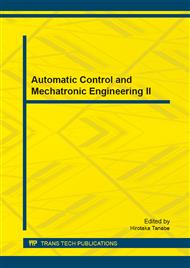p.389
p.396
p.402
p.409
p.414
p.418
p.423
p.427
p.431
A Comparative Analysis of Inductors with Square and Conical Contours
Abstract:
Winding pattern and contour are important factors in power inductors with multiple layer windings, since power inductors with multiple layers are prone to proximity effect, as multiple stacking increases the resistance stress of a conductor, eventually leading to failure of the inductor. This paper presents a comparison of winding losses for cone and square contour inductors, and discusses possible causes for the discrepancy. Conical contour inductors within a fixed core window are comparatively better than square contour winding inductors. A cross sectional analysis after winding revealed that the conical contour inductor has a gap between the conductors, indicating no melting and diffusion between layers. The absence of diffusion due to thermal degradation in conical contour winding is believed to be due to the conductor skin thickness, which is on average smaller, owing to the lower winding stresses. For a fixed dimension core and number of turns, winding losses can be reduced using a cone-shape contour compared to a square-shape contour
Info:
Periodical:
Pages:
414-417
Citation:
Online since:
September 2013
Authors:
Price:
Сopyright:
© 2013 Trans Tech Publications Ltd. All Rights Reserved
Share:
Citation:


